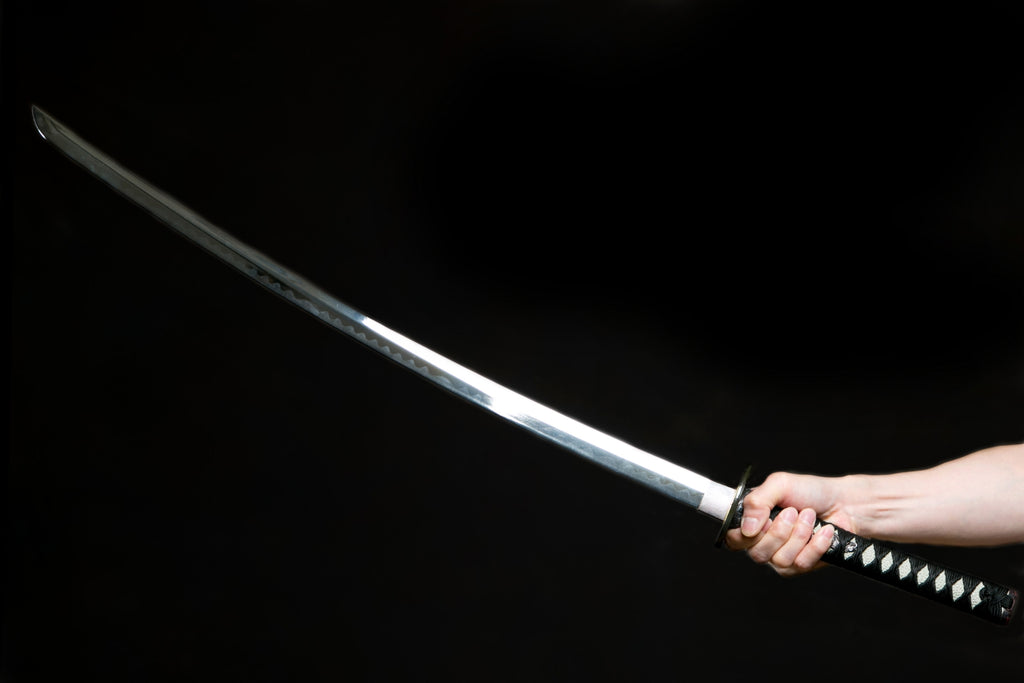Japanese Katana is famous not only for its sharpness but also for the artistic value. Let’s see the secret of this rare combination, the functionality as a strongest weapon and the beauty as an art, and its manufacturing process.
Characteristics of Japanese Katana
Japanese Katana is a general term for swords made by a method unique to Japan. Generally, it refers to a single-edged blade with a curve, which appeared after the Heian period.
The characteristic of Japanese Katana is often described as “does not break, does not bend, and cut well”. They are contradictory specifics, as the sharpness makes it easier to break, or the flexibility to avoid the break makes it easier to bend, however those features have been successfully achieved parallelly through various efforts, made over the time, in the manufacturing process.
Especially the sharpness is the biggest feature of Japanese Katana. Japanese people do not have a good physique so that it was extremely difficult to swing a heavy and strong sword for a long time. Pursuing the sharpness to effectively fight against the enemies, the functionality resulted in slim and sophisticated beauty.

Manufacturing process
The secret of the outstanding sharpness of Japanese Katana lies in many complicated manufacturing processes.
“Tamahagane” iron, a material used for Japanese Katana, is produced by the "Tatara” method. Tatara is an ancient iron-making technology in Japan by putting iron sand into a furnace charcoal and melting it. Tamahagane contains high-quality steel and extremely few impurities that cause brittleness. It is an indispensable material for making Japanese Katana.
Here we introduce a common method of making Katana.
Iron making:
Tamahagane is melted at a low temperature, hammered and streched, cut into small pieces of about 2 to 3 cm square, and then sorted into hard and soft ones. Hard steel contains a large amount of carbon and is used for "Kawagane" on the outside of the blade, and soft steel contains a small amount of carbon and is used for "Shingane" in the inner of the blade.
Piling and Folding:
The same type of Tamahagane is piled up, put in a furnace again and melted at high temperature to make one lump. This process is called "Wakashi” boiling in blacksmith terminology. After boiling, "Tanren” is performed by hitting and folding. By repeating this process, the impurities are further removed. After about 15 times, the iron lump becomes a 33,000 layers of steel, creating the toughness of Japanese Katana.
Heating and Quenching:
Shingane is wrapped by Kawagane, and stretched into the shape of Katana. This double structure, soft iron inside and hard iron outside, enables the above-mentioned features of "does not break, does not bend, and cuts well". After the shape is finished, it is finally "Yakiire" quenching. Heat the blade about 800 degrees then put it in the cool water to quench. In this way, Katana’s typical curve is formed.
Finishing and engraving:
Correct the bending and warping, and sharpen with a whetstone to finish the Katana beautifully. Finally, engrave the swordsmith's inscription on the Katana and it is done.

The culmination of craftsmanship
Japanese Katana is made of many parts, apart for the blade, such as “Saya” holder, “Nakago” grip, “Tsuka” handle to hold Nakago, “Tsuba” brim to prevent hands from touching the blade. In each area, there are specialized craftsmen.
In other words, Japanese Katana can only be made with the combined skills of various craftsmen, not just the swordsmith who makes the blade. It is the culmination of traditional Japanese crafts.

